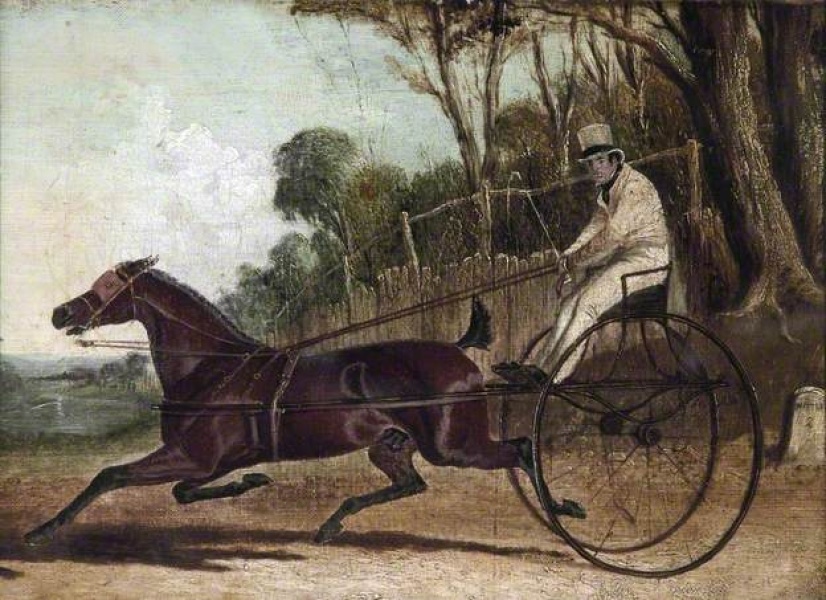Listed in 1 collection
Listed at 1 museum
Listed for 1 maker
Quick Details
Date of Production
1830
Materials used
Paint, CanvasSummary of Rattler the Trotter
An oil on canvas painting of a famous 19th century trotter called Rattler. Painted by John Frederick Herring (1795-1865) in 1830.
Full description
'Young Rattler' was and still is the most famous French Trotter to have existed. He was foaled in 1811 out of a Thoroughbred stallion and a Norfolk Trotter mare and is one of the foundation sires of the modern French Trotter breed. In this painting he is depicted trotting at speed harnessed to a Skeleton Gig, a carriage popular with young men who owned racy horses and competed in trotting matches.
Artists profile
John Frederick Herring was born in London in 1795. Herring spent the first eighteen years of his life in London, where his greatest interest was drawing and horses. In 1814, at the age of 18, he moved to Doncaster in the north of England. He married Ann Harris and had three sons who all became artists, John Frederick Herring Jnr, Charles Herring, and Benjamin. His two daughters, Ann and Emma, both married painters.
In Doncaster, Herring was employed as a painter of inn signs and coach insignia on the sides of coaches, and his later contact with a firm owned by a Mr. Wood led to Herring's subsequent employment as a night coach driver. Herring spent his spare time painting portraits of horses for inn parlours, and he became known as the "artist coachman". His talent was recognised by wealthy customers, and he began painting hunters and racehorses for the gentry .
In 1830 Herring left Doncaster for Newmarket where he spent three years before moving to London. In the city he experienced financial difficulties and was given financial assistance by W Copland , who commissioned many paintings, including some designs used for the Copeland Spode bone china.
In 1845, Herring was appointed Animal Painter to HRH the Duchess of Kent , followed by a subsequent commission from Her Majesty Queen Victoria who remained a patron for the rest of his life
Access information
This painting is in the care of National Museums Liverpool
Picture credit
National Museums Liverpool

 Carriage Foundation
Carriage Foundation